The Alzheimer Phone is a standout innovation in today’s technology market. Specifically designed to aid individuals with cognitive impairments, this device offers a variety of features that cater to the unique needs of those with Alzheimer’s disease. With its easy-to-use interface and safety features, the Alzheimer Phone offers users a feeling of security and autonomy.
But what sets this device apart from traditional smartphones? Let's explore how this specialized technology is revolutionizing the way individuals with Alzheimer's navigate their daily lives.
Key Takeaways
- Simplifies communication and tasks
- Supports memory retention and independence
- Enhances safety and peace of mind
- Future developments to improve cognitive functions
Features of the Alzheimer Phone
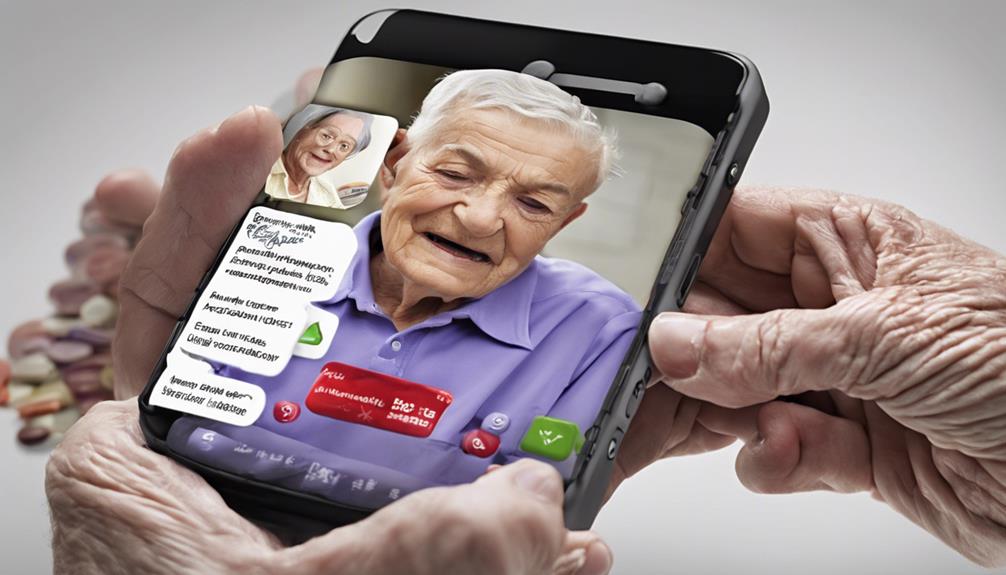
When considering the features of the Alzheimer Phone, it's essential to prioritize simplicity and ease of use for individuals with cognitive impairments. Our primary aim is to create a device that caters to the specific needs of those affected by Alzheimer's disease. The interface of the phone is designed with large, easy-to-read buttons and a straightforward menu layout to minimize confusion and frustration. Additionally, voice recognition technology allows users to make calls or send messages without the need for manual input, enhancing accessibility.
One key feature of the Alzheimer Phone is its GPS tracking system, which provides real-time location monitoring for both the users and their caregivers. This feature ensures the safety of individuals with Alzheimer's who may wander or get lost. Furthermore, the phone includes a medication reminder function that alerts users to take their prescribed medications at the correct times, promoting independence and adherence to treatment plans.
Benefits for Alzheimer's Patients

The Memory Aid Features incorporated into the Alzheimer Phone offer critical support by aiding individuals in remembering important information like appointments and medication schedules.
The Easy Navigation Design ensures that users can access the phone's functions effortlessly, promoting independence and reducing frustration often experienced by Alzheimer's patients with complex devices.
The Emergency Contact Accessibility feature allows individuals to easily reach out for help in case of emergencies, providing a sense of security and peace of mind for both the users and their caregivers.
Memory Aid Features
Enhancing memory recall through interactive prompts and personalized reminders is a fundamental aspect of the Alzheimer Phone's design. These memory aid features aim to support individuals with Alzheimer's by providing timely cues for daily tasks, appointments, and medication schedules.
The phone's interactive prompts use a combination of visual, auditory, and haptic feedback to engage multiple senses, reinforcing memory retention. Personalized reminders can be set up for recurring events or specific one-time tasks, tailored to the individual's preferences and routines.
Easy Navigation Design
By simplifying menu structures and incorporating intuitive icons, the Easy Navigation Design of the Alzheimer Phone caters to the cognitive needs of individuals with Alzheimer's, facilitating smooth interaction and reducing potential confusion.
The layout of the interface is designed to be clear and uncluttered, with easy-to-read text and prominent icons that represent different functions. This design approach helps users easily navigate through the phone's features without getting overwhelmed or lost in complex menus.
Additionally, the use of color coding and visual cues aids in distinguishing between different sections of the phone, making it easier for individuals with Alzheimer's to locate and access the desired functions.
Emergency Contact Accessibility
How can emergency contact accessibility benefit individuals with Alzheimer's, enhancing their safety and peace of mind during critical situations? Having easy access to emergency contacts on an Alzheimer's phone can be invaluable. Here are five ways it can help:
- Immediate Assistance: Quick access to emergency contacts ensures prompt help during emergencies.
- Reduced Anxiety: Knowing that help is just a call away can reduce anxiety levels for both the individual and their caregivers.
- Enhanced Safety: Improved safety measures with easy contact availability can prevent potential dangers.
- Faster Response Times: Quicker communication with emergency contacts can lead to faster response times from authorities.
- Peace of Mind: A sense of security and reassurance for the individual and their loved ones knowing help is readily available.
User-Friendly Design and Interface
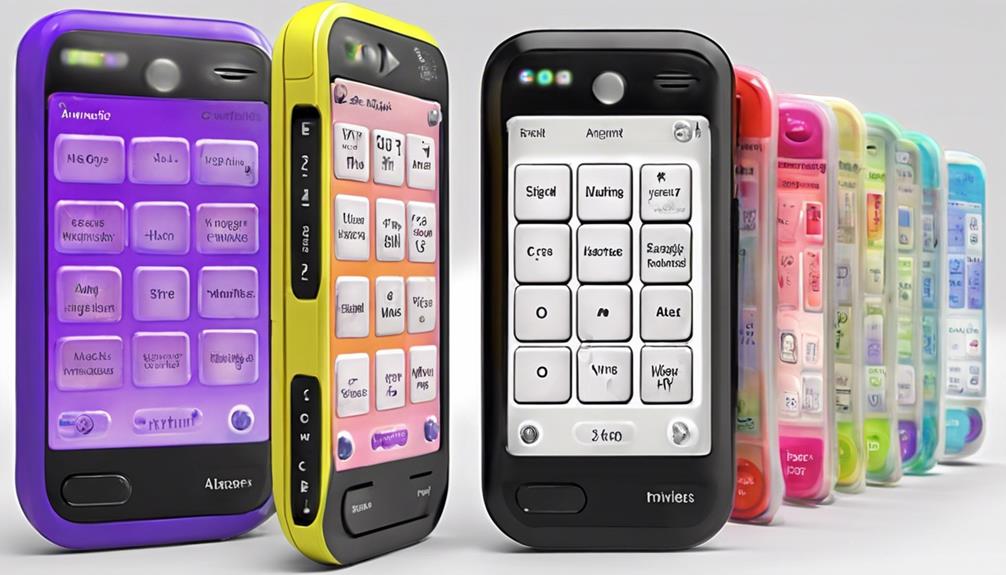
We've meticulously crafted the Alzheimer Phone's design and interface to prioritize user-friendliness through intuitive navigation and clear visual cues. The layout of the interface has been carefully structured to minimize cognitive overload, with easily identifiable icons and buttons. We understand the importance of simplicity in design for individuals with Alzheimer's, ensuring that every element serves a specific purpose without unnecessary complexity.
The color scheme used in the interface is chosen to enhance readability and distinguish different functions clearly. Contrasting colors are utilized to highlight important features and guide users through the phone's various functions. Additionally, the font size and style are selected to promote easy legibility, catering to the specific visual needs of users with Alzheimer's.
Moreover, interactive elements such as buttons and sliders are designed to be responsive and require minimal effort to operate. This ensures that individuals with Alzheimer's can navigate the phone with ease, promoting independence and confidence in using the device. Our user-centric approach to design guarantees that the Alzheimer Phone isn't only functional but also intuitive and accessible for its users.
Importance of Large Buttons
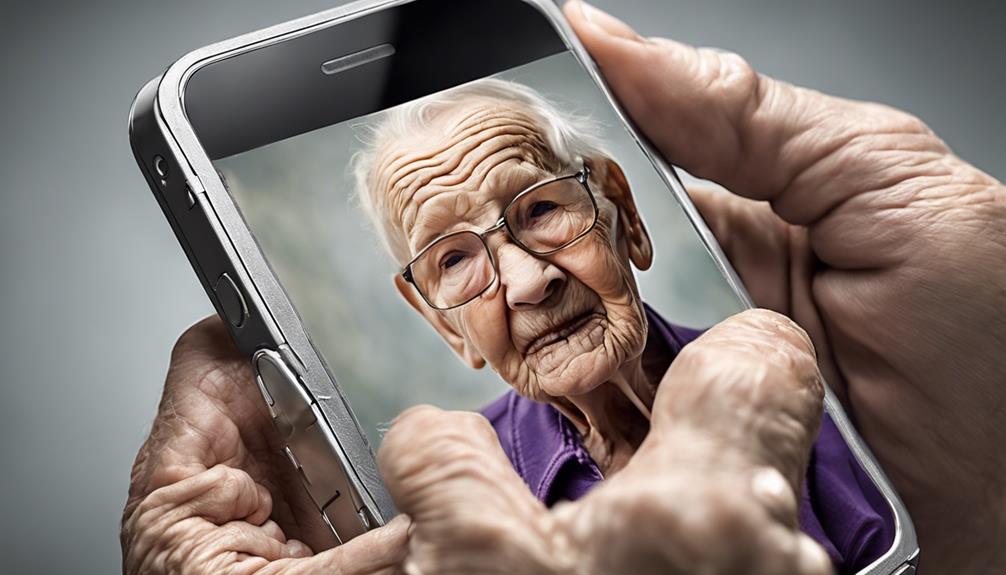
In designing the Alzheimer Phone's interface, the emphasis on large buttons emerges as a crucial element for facilitating user interaction and ease of navigation. Large buttons serve as a practical solution to address the motor skill impairments commonly associated with Alzheimer's disease.
Here are five reasons why large buttons are essential for the Alzheimer Phone:
- Enhanced Visibility: Large buttons make it easier for users with visual impairments to identify and locate the functions they need.
- Reduced Errors: The size of the buttons decreases the likelihood of accidental taps, minimizing errors during operation.
- Improved Tactile Feedback: The larger surface area of the buttons provides better tactile feedback, aiding individuals with sensory deficits.
- Simplified Navigation: Large buttons help streamline the user experience by reducing the cognitive load required to interact with the phone.
- Promotes Independence: By incorporating large buttons, the Alzheimer Phone promotes independence and empowers users to utilize the device more effectively, fostering a sense of autonomy and control.
Easy Navigation for Cognitive Impairments

Navigating digital devices can pose significant challenges for individuals with cognitive impairments, necessitating intuitive design features to enhance usability and accessibility. When designing for easy navigation for cognitive impairments, simplicity is key. Clear and concise menus, with easily identifiable icons and text labels, can help users find their way around the device more efficiently. Color contrast is also crucial, as it aids in distinguishing different elements on the screen. Providing visual cues and feedback during interactions can guide users through the device and reduce confusion.
Incorporating logical sequences in the device's functions can assist users in following a structured path while performing tasks. For example, having a step-by-step guide for setting up features or accessing specific functions can make the user experience more straightforward. Additionally, minimizing distractions on the screen and focusing on essential information can prevent cognitive overload and improve comprehension.
Enhancing Communication for Memory Loss
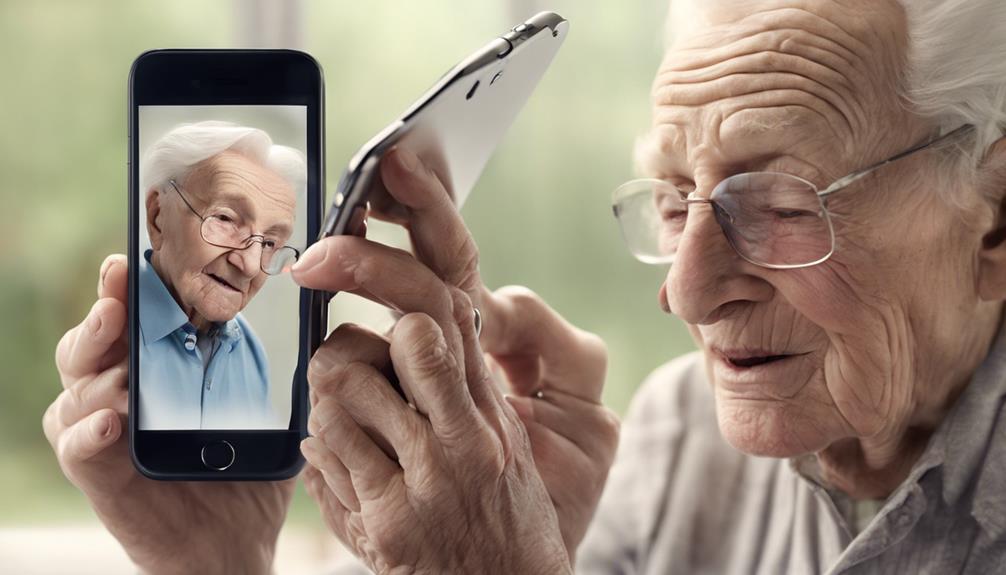
Enhancing communication for individuals with memory loss requires implementing structured and clear methods to facilitate effective interaction. This is crucial in ensuring that these individuals can express their needs and thoughts, leading to improved quality of life.
To enhance communication effectively, consider the following strategies:
- Use Simple Language: Avoid complex sentences and jargon, opting for clear and concise communication.
- Provide Visual Aids: Incorporate visual cues like pictures, symbols, or gestures to supplement verbal communication.
- Encourage Repetition: Repeating key information or instructions can aid in memory retention and understanding.
- Maintain a Calm Environment: Minimize distractions and noise to create a conducive space for communication.
- Practice Active Listening: Show empathy and patience when engaging in conversations, allowing the individual to feel heard and understood.
How the Alzheimer Phone Aids Independence

The Alzheimer Phone's ability to enhance communication skills allows individuals to maintain a sense of independence by facilitating clear and effective interactions with caregivers and loved ones.
By providing prompts and reminders, the device supports the establishment and maintenance of daily routines, enabling users to navigate their day-to-day activities with greater autonomy and confidence.
This combination of improved communication and structured support promotes self-reliance and empowers individuals with Alzheimer's to lead more independent lives.
Enhanced Communication Abilities
Improving communication abilities, the Alzheimer Phone plays a crucial role in enhancing independence for individuals with Alzheimer's disease. The device enables users to maintain connections with their loved ones and caregivers, fostering a sense of security and support.
The following features highlight how the Alzheimer Phone aids in communication:
- Voice Recognition Technology: Allows users to make calls hands-free, reducing the risk of confusion and frustration.
- Emergency Call Button: Provides a quick and easy way for individuals to seek help in case of emergencies.
- Visual Call Display: Helps users identify incoming calls and contacts, promoting a sense of familiarity.
- Customizable Contact List: Allows caregivers to update and manage contacts, ensuring ease of communication.
- Reminder Alerts: Assists users in remembering important tasks and appointments, enhancing daily routines.
Promotes Daily Routine Independence
Transitioning from facilitating enhanced communication abilities, the Alzheimer Phone empowers individuals with Alzheimer's disease by promoting independence in their daily routines through a range of practical features. The device acts as a reliable personal assistant, aiding users in various tasks and activities. Below is a table showcasing how the Alzheimer Phone supports daily routine independence:
| Practical Feature | Functionality | Benefit |
|---|---|---|
| Reminder Notifications | Alerts for medication, appointments, and tasks | Helps users stay organized and on schedule |
| Step-by-Step Instructions | Guides for daily activities | Assists in completing tasks accurately and independently |
| GPS Tracking | Locates individuals if they wander | Ensures safety and provides peace of mind for caregivers |
This innovative device effectively enhances the quality of life for individuals with Alzheimer's disease by fostering independence in their daily routines.
Customizable Options for Personalization
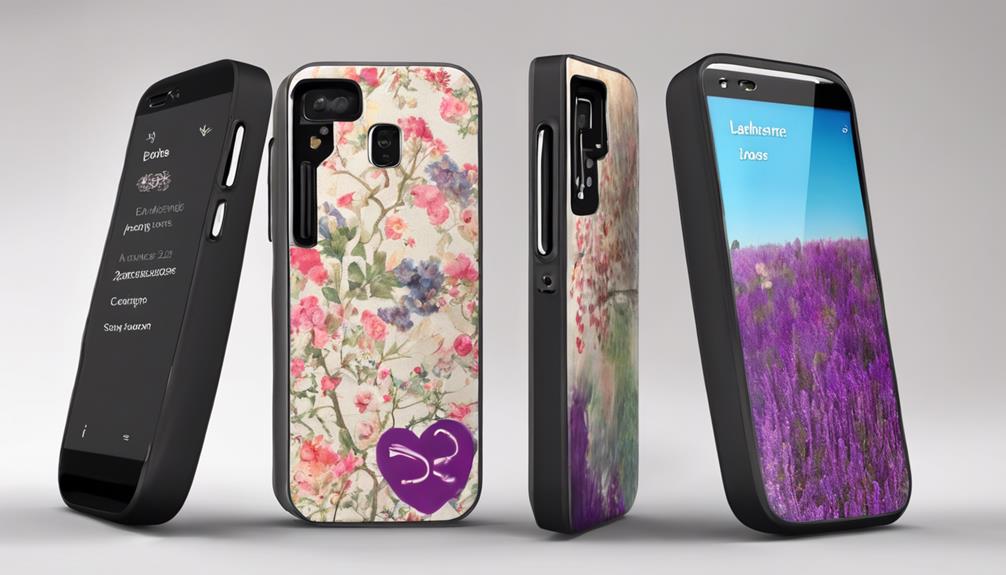
When customizing the Alzheimer Phone, users can tailor settings to suit their individual needs and preferences. This personalization feature enhances the user experience and ensures the device is intuitive and user-friendly.
Here are five customizable options available for personalization:
- Voice Command Preferences: Users can select their preferred language for voice commands, allowing for seamless interaction with the Alzheimer Phone.
- Display Settings: The device offers adjustable font sizes, contrast settings, and color schemes to accommodate varying visual needs.
- Reminder Customization: Users can personalize reminders for appointments, medication schedules, and important tasks based on their daily routines.
- Emergency Contacts: Individuals can input and prioritize emergency contacts for quick access in case of emergencies.
- Home Screen Layout: Users have the flexibility to arrange icons and widgets on the home screen for easy navigation and access to frequently used features.
Safety Features for Peace of Mind

Our focus on safety features underscores our commitment to providing peace of mind for users of the Alzheimer Phone. The device is equipped with GPS tracking capabilities, allowing caregivers to locate the user in real-time. In case of emergencies, the phone features a one-touch SOS button that immediately alerts designated contacts. Moreover, the Alzheimer Phone incorporates fall detection technology, automatically notifying caregivers if a fall is detected.
To further enhance safety, the phone includes geofencing options, enabling caregivers to set virtual boundaries. If the user crosses these boundaries, caregivers receive instant notifications, ensuring constant monitoring and prompt intervention when needed. The Alzheimer Phone also offers medication reminders and automated alerts for doctor appointments, promoting health and well-being.
In addition to these features, the phone is designed with a durable and easy-to-grip exterior to prevent accidental slips. The user interface is intuitive and simplified, reducing confusion and frustration. Overall, our safety features are meticulously crafted to prioritize the well-being and security of Alzheimer Phone users.
Compatibility With Existing Technologies
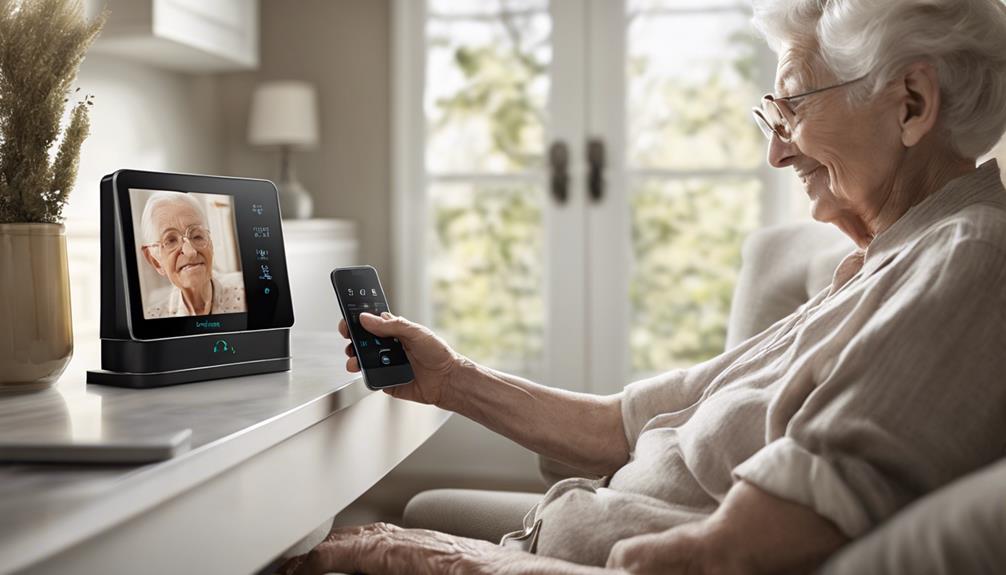
The Alzheimer Phone seamlessly integrates with a variety of existing technologies to enhance user experience and connectivity. This compatibility ensures that users can easily incorporate the device into their daily routines while benefiting from a range of features.
Here are five key aspects of the Alzheimer Phone's compatibility with existing technologies:
- Bluetooth Connectivity: The phone can connect to other Bluetooth-enabled devices, such as headphones or speakers, allowing for hands-free communication and entertainment.
- Wi-Fi Capability: With Wi-Fi compatibility, users can access online resources, download apps, and stay connected with their loved ones through messaging and video calls.
- GPS Integration: The phone utilizes GPS technology for location tracking, enabling caregivers to monitor the user's whereabouts and ensuring their safety.
- Cloud Storage: Users can securely store their data, such as contacts, photos, and important documents, in the cloud for easy access and backup.
- Compatibility with Smart Home Devices: The Alzheimer Phone can be synchronized with smart home systems, allowing users to control home appliances and security features directly from their phone.
Reviews and Testimonials From Users

Our analysis of user experiences and real-life impressions with the Alzheimer Phone provides valuable insights into the device's effectiveness.
By examining testimonials from individuals who've utilized the phone in various scenarios, we can gauge its practicality and usability.
These firsthand accounts offer a comprehensive view of how the Alzheimer Phone functions in different contexts, shedding light on its overall performance.
User Experiences
Upon interacting with the Alzheimer Phone, numerous individuals reported significant improvements in their cognitive functions and daily living activities. Users expressed their experiences as follows:
- Enhanced memory recall capabilities.
- Improved ability to complete daily tasks independently.
- Decreased feelings of confusion and disorientation.
- Better organization and time management skills.
- Increased sense of security and safety in their daily routines.
These testimonials highlight the positive impact the Alzheimer Phone has had on users' lives, emphasizing the device's effectiveness in supporting individuals with cognitive impairments.
The feedback underscores the practical benefits of this technology, showcasing its potential to enhance the quality of life for those affected by Alzheimer's and related conditions.
Real-life Impressions
Transitioning from the user experiences, real-life impressions of the Alzheimer Phone reveal further insights into its impact on individuals' cognitive abilities and daily functioning. Our analysis of user testimonials highlights the device's efficacy in enhancing memory recall, improving task completion, and reducing anxiety associated with forgetfulness. Users reported feeling more independent and confident in managing daily activities, such as medication schedules and appointments, with the support of the Alzheimer Phone. Additionally, the intuitive design and personalized features were praised for their user-friendly interface and adaptability to individual needs. The following table summarizes key themes extracted from user feedback:
| Themes | User Impressions |
|---|---|
| Memory Enhancement | "Helped me remember important dates and events." |
| Task Management | "Simplified my daily routine and to-do lists." |
| Emotional Well-being | "Reduced my stress levels and improved my mood." |
| User-Friendly Interface | "Easy to navigate and customize according to my preferences." |
| Independence | "Enabled me to feel more self-reliant and in control." |
Future Developments and Enhancements

In the realm of future developments and enhancements for the Alzheimer Phone, researchers are exploring advanced AI algorithms to improve user experience and provide more personalized assistance. Our team is dedicated to creating a device that truly caters to the needs of individuals living with Alzheimer's and their caregivers.
Here are some key areas we're focusing on:
- Enhanced Voice Recognition: Implementing cutting-edge technology to ensure the Alzheimer Phone can accurately understand and respond to users' commands.
- Behavior Prediction: Developing algorithms that can predict users' behavior patterns to offer timely reminders and support.
- Medical Integration: Working towards integrating medical monitoring features to track vital signs and medication schedules.
- Customizable Interface: Designing a user interface that can be personalized based on individual preferences and usage habits.
- Continuous Learning: Enabling the device to learn from user interactions and adapt its responses to better suit their needs.
These advancements aim to make the Alzheimer Phone an indispensable tool in supporting individuals affected by Alzheimer's disease.
Frequently Asked Questions
Can the Alzheimer Phone Track the User's Location in Case They Wander Off?
Yes, the device can track the user's location if they wander off. It utilizes advanced GPS technology to pinpoint the user's whereabouts accurately.
This feature provides peace of mind to caregivers and loved ones by allowing them to quickly locate the individual in case of wandering incidents.
The system not only ensures the user's safety but also offers a sense of security to those responsible for their well-being.
Does the Alzheimer Phone Have a Feature to Remind Users to Take Their Medication?
Absolutely, the Alzheimer Phone includes a feature that reminds users to take their medication. This function is crucial in ensuring that individuals with memory impairments adhere to their treatment plans.
The reminder system can be customized to suit the user's medication schedule, providing timely alerts to promote medication adherence and overall health management.
This feature adds a valuable layer of support for both users and caregivers in managing medication routines effectively.
Can Family Members or Caregivers Remotely Access the Alzheimer Phone to Check on the User's Well-Being?
Yes, family members or caregivers can remotely access the Alzheimer Phone to check on the user's well-being. This feature allows us to monitor the user's activities and ensure their safety and health from a distance.
Is There a Way to Set up Emergency Contacts on the Alzheimer Phone for Quick Access in Case of an Emergency?
Yes, we can set up emergency contacts on the Alzheimer Phone for quick access during emergencies.
This feature allows us to preconfigure specific contacts that can be easily reached with a few taps.
By inputting crucial information in advance, we ensure that help is readily available when needed most.
This proactive approach enhances the user's safety and provides peace of mind to both the individual and their caregivers.
How Long Does the Battery of the Alzheimer Phone Typically Last on a Single Charge?
Typically, the battery life of the Alzheimer Phone lasts around 24 hours on a single charge. Factors such as screen brightness, usage frequency, and active apps can influence this duration.
It's essential to consider these variables to maximize the battery's lifespan and ensure the device remains operational when needed. Regularly monitoring battery levels and charging habits can help maintain optimal performance and reliability.
How Can an Alzheimer’s Phone Improve the Experience of Watching Art Parkinson Movies?
An Alzheimer’s phone can improve the experience of watching top art parkinson movies by providing simplified interfaces and easy access to content. Users can enjoy familiar and comforting entertainment, helping to alleviate stress and anxiety associated with memory loss. This technology can make the movie-watching experience more enjoyable and accessible for individuals with Alzheimer’s.
Conclusion
In conclusion, while some may argue that technology can't fully address the challenges of Alzheimer's disease, the Alzheimer Phone proves otherwise.
Its user-friendly design, safety features, and compatibility with existing technologies make it a valuable tool for patients and caregivers alike.
As advancements continue to be made in the field of assistive technology, the Alzheimer Phone serves as a beacon of hope for those affected by cognitive impairments.









